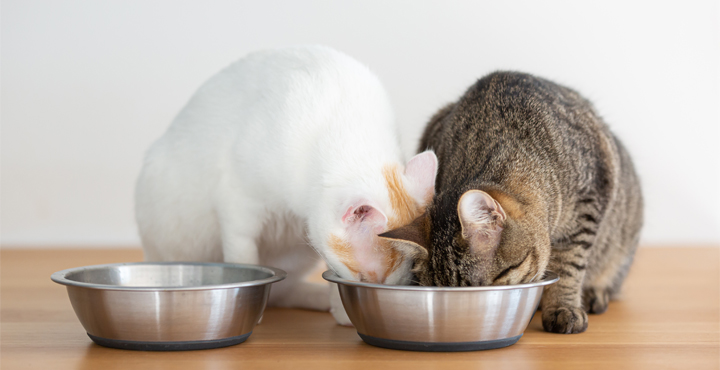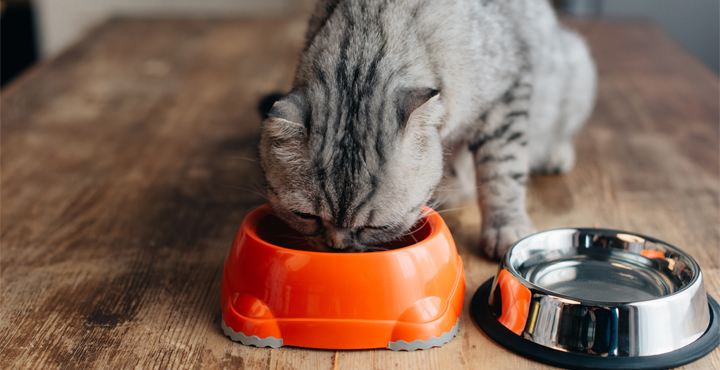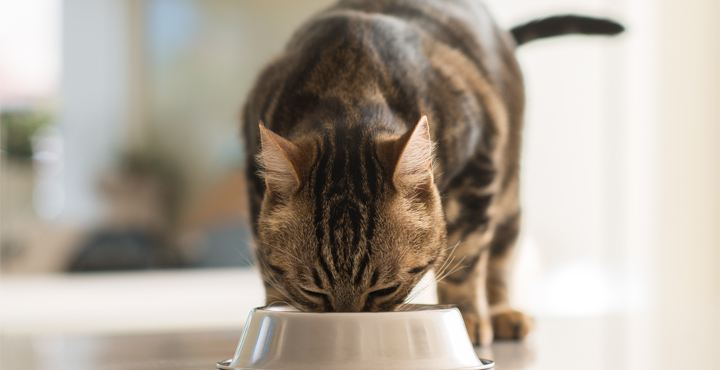
There may come a time in your cat’s life when you decide to change their food. This could be for their health, because they’ve reached a new life stage, or simply because you’re interested in trying a different brand. However, changing a cat’s food isn’t as simple as making an overnight switch, and there are several things you must take into consideration first. Sudden changes to your cat’s diet can have side effects, so it’s important to make any changes sensibly and safely to keep them healthy. In this article, Whiskas looks at the potential consequences of changing cat food.
Can changing a cat’s food cause diarrhoea?
When your cat has been eating the same food for a long time, any adjustments to their diet can have side effects, including diarrhoea and vomiting. If you have recently changed your cat’s food and they have diarrhoea, try going back to their previous food to see if they improve. Cats’ stomachs can be sensitive to certain types of food, and some ingredients may not agree with them. Examples of diets that may cause your cat to have diarrhoea include raw cat food or a BARF diet, or a diet higher in fibre. Cats can also be sensitive to cow’s milk, which in some cases causes diarrhoea.
Even swapping from dry to wet food or vice versa can upset a cat’s stomach. Take the time to research different brands and types before you decide to change your cat’s diet. As a general rule, meats like turkey and chicken are easy to digest, especially when combined with rice or wheat.
How to safely change a cat’s diet
If you are keen to change your brand or type of cat food, you need to do this slowly and safely. Start by adding a small quantity of the new food to the old food, and gradually increase the percentage of new food until your cat is happily eating it with no side effects. Depending on how fussy your cat is, this process can sometimes take a week or so. Be patient and don’t be tempted to rush your cat. If your cat does have an upset stomach at first, ensure they have plenty of fresh water to drink.
If your cat turns their nose up at the new food and refuses to eat it, you should rethink your decision. If cats go without food for a certain amount of time, they risk developing hepatic lipidosis, which can be fatal.
When should you change your cat’s diet?
Occasionally your vet may suggest a change to your cat’s diet due to certain health conditions – and they should advise the brand or type that will be best. As cats grow up, they need different types of food to support their nutritional needs, so consider this when your kitten becomes an adult cat. Similarly, as your cat gets older, they will likely eat differently. Finally, cats can suffer from food intolerances, meaning you may have to change their diet. Before making any changes, always consult a vet for advice on which type of food will best meet your cat’s needs.
What to do if your cat has diarrhoea
If your cat has ongoing diarrhoea, their diet may not always be the culprit. If your cat has diarrhoea and is also exhibiting any of the following symptoms, there may be an underlying health issue:
- Has stopped eating and/or drinking
- Vomiting
- Lethargy
- Watery diarrhoea
- Frequent diarrhoea
- Diarrhoea has blood in it
Cats can also get diarrhoea when they have worms, have ingested toxins, or they are stressed – so if you are concerned about your cat, book a vet appointment immediately and take them for a check-up.
Changing a cat's food isn't as simple as making an overnight switch.
Read on for some useful tips on how to safely switch your cat onto a different diet.







